This was published 8 years ago
British Isles cruise: A birds-and-bees cruise with a difference
By Megan Backhouse
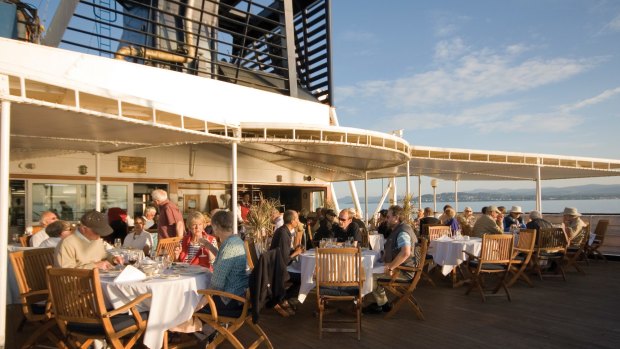
Aboard th eIsland Sky.Credit: Evan Shortiss
So there we are at 7.15am, seven days into our cruise of the British Isles. It's 10 degrees, windy and intermittently raining – and the start of summer? We are anchored in the Sound of Iona but to get to the island we have to be driven over a frothy, choppy sea in an inflatable boat. Enthusiasm is, quite honestly, at a fever pitch.
Some are on a quest to see the corncrake, a migratory bird that hides in the island's undergrowth and taunts twitchers with its can't-find-me call. One couple has ancestors in the island's graveyard, which, about 1000 years ago, was also a burial site for Scottish kings. Others feel a more general pull to this small Inner Hebrides island that has been inhabited since the Iron Age and that now, no matter the two sizeable cruise ships moored off its jetty, is a centre for monasticism. I am up for this early-morning dinghy (for there are several later ones scheduled as well) because I have a phobia about missing anything.
The fact that I am a good 15 years younger than any other passenger on the ship stands me in less good stead than you would think. There's no lingering in cabins. By night we don't do discos or floor-shows but attend pre-dinner lectures on Arts and Crafts gardens, the Irish potato famine and how a Fulmar's long thin wings designed for dynamic soaring mean it can fly for a week.
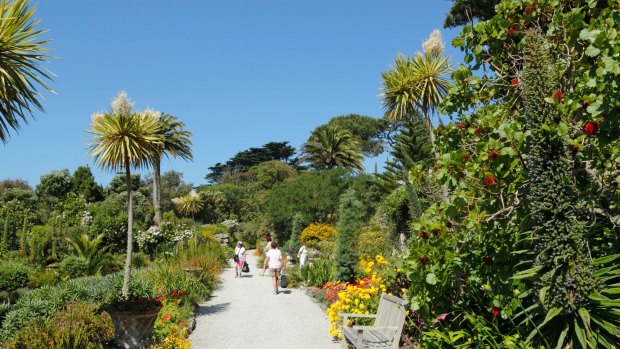
Tresco Abbey Gardens on the Isles of Scilly, Cornwall.Credit: Alamy
By morning we embark Zodiacs with life jackets and walking sticks. On the trip to the cracked concrete jetty of Iona, our Zodiac skids over a slapping sea.
At 6am on lots of mornings on this 10-night cruise we leave the comfort of our beds made up in white linen and piled with mountains of soft pillows to don beanies, parkas and gloves and step onto an outdoor walk-around deck where we take a battering from unseasonably high winds. Because we never wake up in the same place we go to sleep, we stumble upon gorse-covered hills, lighthouses, centuries-old towns and vast pink-grey skies in this way. As our boat closes in on our next stop we might be travelling along Irish rivers, the Irish Sea or Scottish sounds.
This might be a luxury cruise where, by night, we are plied with champagne and dine on lobster but, by morning, we are like any workaday ship being navigated around rocks and rips. By necessity this cruise of the "Castles, Gardens, History and Birdlife" in Ireland, Wales and England is also a cruise of harbour-side industry.
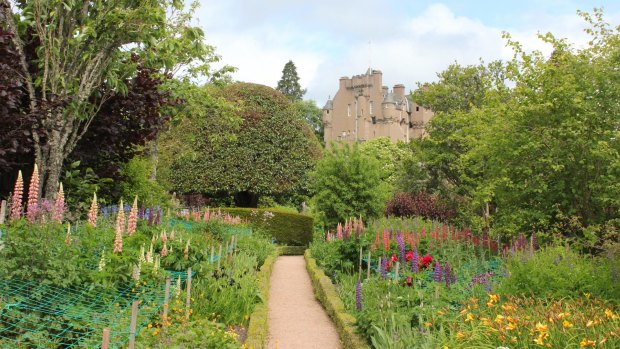
Crathes Castle.
Entering Waterford we pass smoke stacks and walls of shipping containers. In Belfast we tie up opposite the canary-yellow, heritage-listed cranes of Harland & Wolff, the shipyard that at its height employed 35,000 staff and is most famous for having built the Titanic. In Scotland's granite city of Aberdeen our boat with its clubby lounge, well-appointed library and long-curtained dining room is surrounded by knockabout vessels taking on supplies to ferry to oil-rigs. In Tobermory, the pretty fishing-village capital of the Isle of Mull, where all the shops and restaurants are painted different colours, we drop anchor in the middle of a sound where we bob up and down in time with the Atlantic Ocean.
The Atlantic Ocean is, in fact, a central element of this cruise. That water body's warm, fast-moving Gulf Stream current – which sets off from the Gulf of Mexico, moves along the eastern coast of North America, around the British Isles and beyond – has such a profound impact on the climate of this area that gardeners have rounded on it in droves.
Newfoundland and parts of Russia are on similar latitudes to the places we visit but the Gulf Stream means that the British Isles are mostly graced with mild (by British standards anyway), frost-free winters.
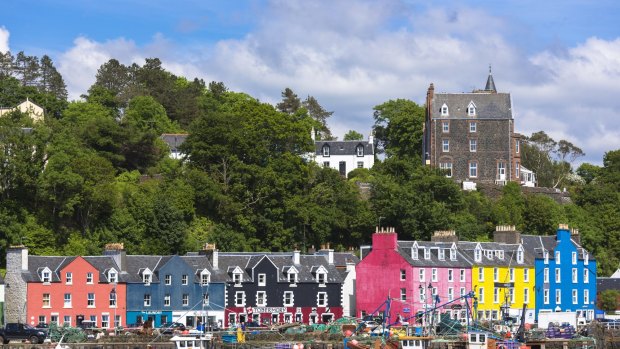
The waterfront at Tobermory the capital city of the Isle of Mull in the Inner Hebrides of Scotland. Credit: Getty Images
As early as the 1830s Augustus Smith was making the most of the forgiving weather (save the odd lacerating gale) on the island of Tresco off the coast of Cornwall. He began planting windbreaks (Monterey Cypress and Monterey Pine) and experimenting outdoors with the sort of exotic novelties Sir William Hooker was securing for glasshouses in Kew. Fifty years later Osgood Mackenzie began pushing boundaries in the Scottish highlands. He was 20 years old when his mother bought him thousands of acres on the shores of Loch Ewe and he spent the rest of his life shocking visitors by the rarity of what he managed to cultivate.
In the 1920s it was Edith Vane-Tempest-Stewart, Marchioness of Londonderry, who was so particularly struck by all she could grow in County Down, Northern Ireland, that she set about landscaping the vast grounds of the family mansion of Mount Stewart (in went a wild garden, a paved one, a lily wood, a rock and shrub garden, an Italian garden, a secluded garden with a salt-water swimming pool and more besides.)
Another half-century on and it was renowned plantswoman Helen Dillon who got working on her unorthodox garden in Dublin. For 45 years it has been a constantly changing affair and currently has as its centrepiece a clean-edged canal framed by billowing herbaceous borders and planted-up galvanised dustbins. Then, only about 10 years ago, Lucy Mackenzie bought a ruined cottage on the north-west coast of the Isle of Mull with the aim of making a garden that was expressly not a "rhododendron-type" one like her mother's. With no masterplan she experiments with the "widest range of shrubs and herbaceous plants possible" in this relatively mild climate. An avid beachcomber and old-tip-fossicker she incorporates found driftwood, rusty colanders and the like into her hillside plantings.
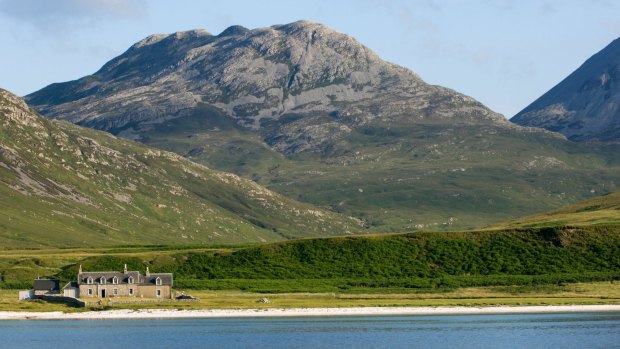
The white sandy shore of Loch Tarbert on the west side of Jura. Credit: Alamy
Then there's the wild William Robinson-style Mount Usher Gardens created over more than a century by four generations of the one family in Ashford outside Dublin. And the Irish holiday castle in County Waterford, which has been in the Cavendish family for more than 400 years, that boasts both the oldest continually cultivated gardens in Ireland and the yew avenue where, in the 1590s, Edmund Spenser is said to have written part of The Faerie Queene.
On our boat are about 80 guests, most here chiefly to visit gardens. Over nine days we visit up to two a day. They are variously old, new, formal, wild, no-expense-spared or created on a shoestring. While organisers have broadened the cruise's appeal by promising castles, history and birdlife, these almost always tie into gardening. The 16th Century turrets and towers of Scotland's Crathes Castle, which we visit during our Aberdeen stop, for example, is surrounded by centuries-old yew topiary and other plantings that in turn attract finches, ravens, oystercatchers and other birds that have people from our ship pulling out their binoculars.
So, in short, our "boutique" ship with its mega-yacht appearance and imitation-rosewood-panelled cabins is largely filled with mature gardeners, sometimes with husband in tow. But as every gardener knows, not everyone is interested in gardening in the same way. Some are caught up in the minutiae and others in the broad sweep. There are people who want the Latin name of every plant and others who are curious about the design. Some like theatrical foliage while others can't get past flowers. There are people who like to be amazed by plants they have never seen before and others who are more interested in familiar plants used in unfamiliar ways. While there is always at least one person who attempts to stride from fence-line to fence-line (though some of these gardens are so big it proves impossible), there are others who prefer to take it all in from the one seat and others again who adopt what I would call a medium-paced stroll.
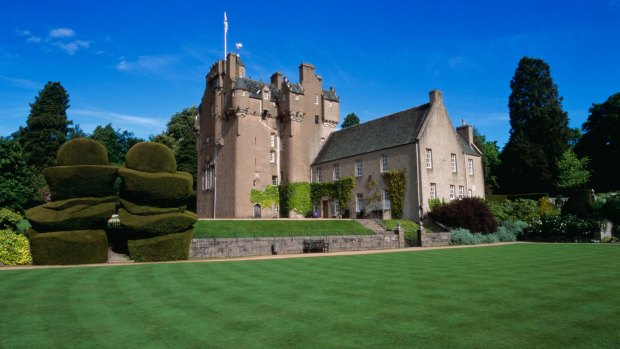
Crathes Castle near Banchory.Credit: Alamy
How to bridge such a diverse set of inclinations? In short, the Botanica answer is a diverse itinerary and a bevy of guides. There are two botanical experts – the plants-focused ex-Diggers Club head gardener Simon Rickard and a Welsh garden designer, Anthea Guthrie. And then some gardens have their own guides (mostly the gardeners) as well. In addition New Zealand ornithologist Tony Crocker is on board to home in on birds, while maritime historian Damien Sanders deals in Vikings, storms and shipwrecks.
Together they have everything covered, from how to make hazel hurdles for vegetable beds to why Spanish bluebells are crowding out English ones to how our ship with its "ducktail" stern would fare on the water in a category-five hurricane. Over pre-dinner aperitifs we hear about 19th century plant hunting, 21st century beachcombing and why it will be another couple of weeks until the goldfinch starts breeding on the Isles of Scilly.
It's not all gardens and birds, though. During a whisky distillery drinking session on Jura, we are served three drams by 3pm. On this Inner Hebrides island, people have been making whisky for more than 400 years. At one time, every household on the island made its own single malt. But the present-day Jura distillery, built in 1963 and owned by the Philippines-based Whyte and Mackay, is a slick, international operation.
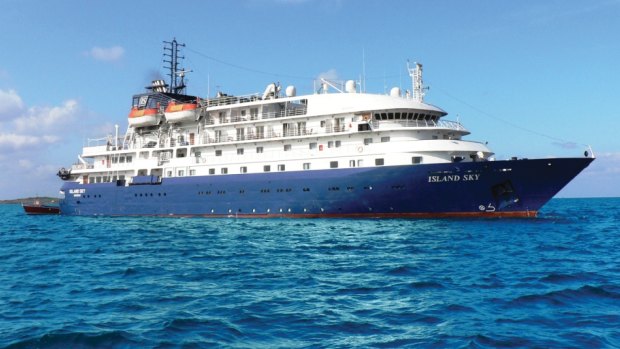
The Island Sky.
Not so the island as a whole though, which Wikipedia describes as "mountainous, bare and infertile, covered largely by vast areas of blanket bog". George Orwell, who survived being down and out in Paris and London, lived here for four years before dying of tuberculosis in a London hospital at the age of 46 in 1950.
This is a busy no-two-days-in-the-same place holiday with none of the headaches. Leisurely garden visits that would surely cause even the most easy-going of couples major ructions in the negotiating of directions, passenger ferries and hire cars can be done in between lengthy meals and sleep-inducing bus rides. My booklet says that George Orwell chose Jura because there he "could not easily be got at". He would surely be turning in his grave if he knew how very easily we got at the place.
The writer travelled as a guest of Botanica World Discoveries (www.botanica.travel).
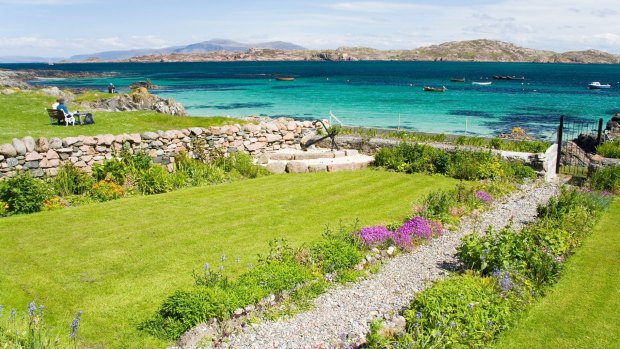
Gardens on the Isle of Iona, Inner Hebrides, Scotland.Credit: Alamy
TRIP NOTES
MORE INFORMATION
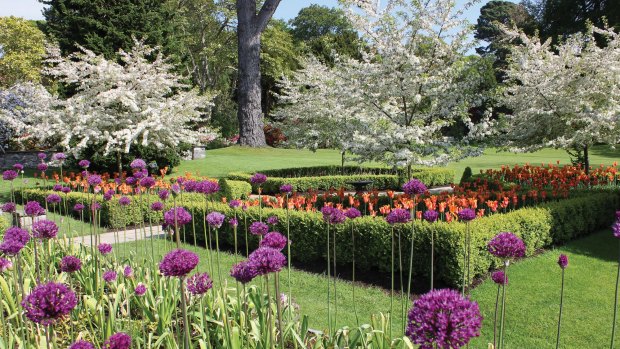
Bodnant Garden, Wales. Photo: Alice Kay
GETTING THERE
Next year's "British Isles, Castles, Gardens, History and Birdlife" cruise departs Edinburgh and concludes in Portsmouth with a transfer to London. All major airlines operate frequent flights between Melbourne and Sydney, and Edinburgh and London. See www.qantas.com.au; www.singaporeair.com; www.emirates.com
DATES
The 2016 cruise starts on 27 May and finishes on 6 June, and costs from $11,995 per person.
COMBINE WITH
The trip can be combined with another pre or post-cruise Botanica tour. Options include a nine-day tour that takes in France's Loire Valley, private gardens in London, the Chelsea Flower Show and gardens of West Sussex (19 May to 27 May, from $8495 per person). Or a five-day tour of private gardens of London, the Cheslea Flower Show and gardens of West Sussex (23 May to 27 May, from $3995 per person). Or a five-day tour of the "iconic gardens of Cornwall", including the Eden Project and Lost Gardens of Heligan (6 June to 10 June, from $4000 per person).
Sign up for the Traveller Deals newsletter
Get exclusive travel deals delivered straight to your inbox. Sign up now.